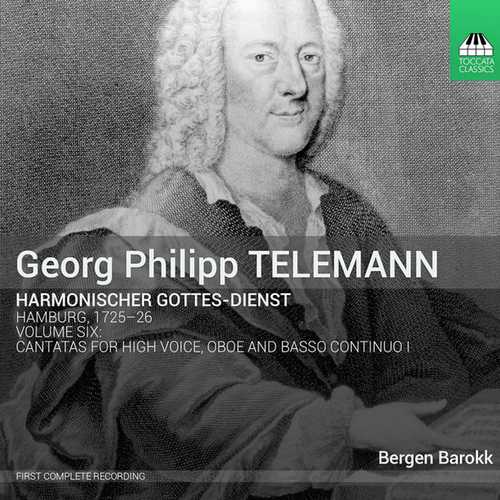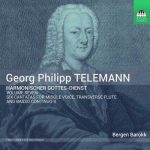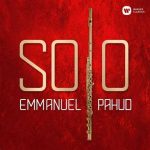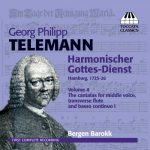
Composer: Georg Philipp Telemann
Performer: Bergen Barokk, Jan van Elsacker
Format: FLAC (tracks)
Label: Toccata Classics
Catalogue: TOCC0180
Release: 2015
Size: 361 MB
Recovery: +3%
Scan: yes
Endlich wird die Stunde schlagen, TWV 1:440
01. Endlich wird die Stunde schlagen
02. Recitative: Ja! Endlich brechen Josephs Bande
03. Aria: Gott fuhret mich nach seinem Wohlgefallen
Was gleicht dem Adel wahrer Christen, TVWV 1:1511
04. Aria: Was gleicht dem Adel wahler Christen
05. Recitativo: Nur darum kommt sein Sohn auf Erden
06. Aria: Walle vor Inbrunst, erfreutes Geblute
Schmeckt und sehet unser Gottes Freundlichkeit, TWV 1:1252
07. Aria: Schmeckt und sehet unsers Gottes Freundlichkeit
08. Recitative: Wie unauusprechlich gross
09. Aria: Folternde Rach, flammende Qual
Warum verstellst du die Gebärden?, TWV 1:1502
10. Recitative: Warun verstellst du die Gebarden?
11. Aria: Nein, lass dein Dulden
12. Recitative: Ja, nimm, o Mensch, was Christus hier getan
13. Aria: Nur getrost, gelassne Seelen!
Ein jeder läuft, der in den Schranken läuft, TVWV 1:425
14. Recitative: Ein jeder lauft, der in den Schranken lauft
15. Aria: Laufet, fechtet, kampfet, ringet
16. Recitative: Ein jeder aber, der da kampft
17. Aria: Halt an, o Mensch und kampf’ im Glauben
Der Reichtum macht allein beglückt, TVWV 1:313
18. Aria:
19. Recitative:
20. Aria:
Schaut, die Demuts-Palmen tragen, TWV 1:1245
21. Schaut die Demut Palmen tragen
22. Recitative: Der Heiland war in gottlicher Gestalt
23. Ihr die ihr nur das Eitle liebet
This is the sixth CD in the first complete recording of the 72 cantatas from Georg Philipp Telemann’s collection Harmonischer Gottes-Dienst, published in Hamburg in 1726 – the first complete set of cantatas for the liturgical year to be appear in print.
Although Telemann wrote an astonishing 1,700 cantatas, 1.400 of which survive, this is the first cycle of his cantatas ever to be recorded in its entirety. One of the cantatas on this CD has never been recorded before.
The cantatas are designated for voice, an obbligato instrument (recorder, violin, transverse flute or oboe) and basso continuo, and generally take the form of two da capo arias with an intervening recitative.
Although intended for worship, both public and private, Telemann’s cantatas are a masterly blend of tunefulness with skilled counterpoint and vocal and instrumental virtuosity.
The pursuit of authenticity in these recordings extends to obtaining the correct pronunciation of the German of Telemann’s day.



